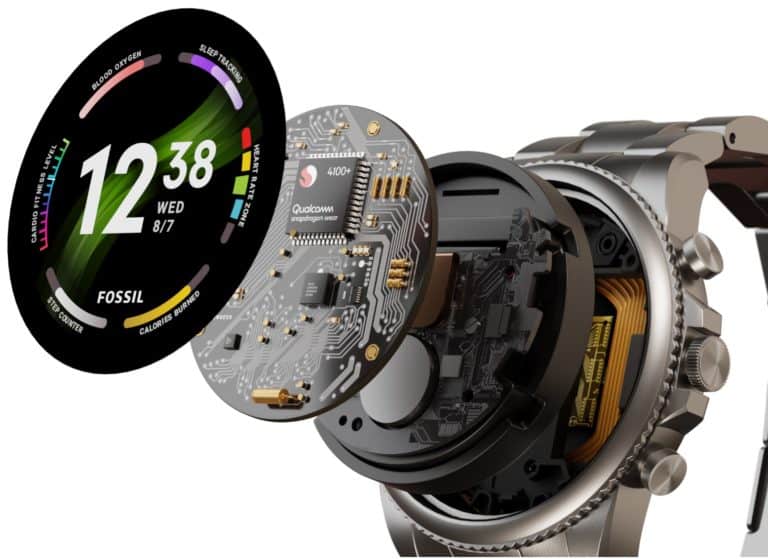Have you ever wondered how to connect your Garmin G5 to a static system? It can be a tricky process, especially if you’re not familiar with the technology. But don’t worry, you’re not alone. Many people struggle with this issue and are looking for a solution.
As someone who works for a website that reviews thousands of wearable products, I’ve seen my fair share of questions about Garmin devices. Connecting the G5 to a static system is a common problem that many users face. It’s important to understand the process so that you can get the most out of your device.
In this article, I will provide you with a step-by-step guide on how to connect your Garmin G5 to a static system. I will also give you some tips and tricks that I think will be helpful. By the end of this article, you should have a better understanding of how to connect your device and be able to use it to its full potential. So, let’s get started!
How Does A Garmin G5 Connect To Static System?
Understanding the Basics of Garmin G5
The Garmin G5 is a popular electronic flight instrument that helps pilots with navigation and situational awareness. It is a compact and lightweight device that can be easily installed in the cockpit. The Garmin G5 is designed to work with a variety of aircraft systems, including the static system.
What is a Static System?
A static system is a set of components that measure atmospheric pressure and provide information to the aircraft’s instruments. The static system includes the static ports, static lines, and static instruments. The static ports are small openings on the aircraft’s exterior that allow air to enter the static system. The static lines are tubes that connect the static ports to the static instruments.
Connecting the Garmin G5 to the Static System
To connect the Garmin G5 to the static system, the device must be connected to the static line. This is typically done by installing a T-fitting in the static line and connecting the Garmin G5 to the T-fitting. The Garmin G5 then measures the atmospheric pressure through the static line and provides this information to the pilot.
Benefits of Connecting the Garmin G5 to the Static System
Connecting the Garmin G5 to the static system provides several benefits to pilots. First, it ensures that the device is receiving accurate atmospheric pressure readings, which is critical for accurate altitude and airspeed readings. Second, it allows the Garmin G5 to provide additional information to the pilot, such as vertical speed and altitude trend.
Installation Requirements
To install the Garmin G5 in the cockpit, it is important to follow the manufacturer’s instructions carefully. The device must be installed in a location that allows for easy viewing by the pilot. Additionally, the static line must be properly connected to the T-fitting and the Garmin G5 to ensure accurate readings.
Maintenance and Troubleshooting
Regular maintenance is important to ensure that the Garmin G5 is functioning properly. This includes checking the static system for leaks or blockages and ensuring that the device is receiving accurate readings. If the Garmin G5 is not functioning properly, troubleshooting steps may include checking the connections and resetting the device.
Conclusion
Connecting the Garmin G5 to the static system is an important step in ensuring accurate altitude and airspeed readings. By following the manufacturer’s instructions for installation and maintenance, pilots can rely on the Garmin G5 for accurate and reliable information during flight.
FAQs
How does a Garmin G5 connect to static system?
The Garmin G5 is a popular electronic flight instrument that pilots use to navigate and monitor their flight. Here are some frequently asked questions about how the Garmin G5 connects to the static system:
1. What is the static system?
The static system is a network of tubes and sensors that measure the ambient pressure around the aircraft. This information is used to calculate altitude, airspeed, and vertical speed.
2. How does the Garmin G5 connect to the static system?
The Garmin G5 connects to the static system through a port on the back of the instrument. A tube is connected to this port and routed to the static system on the aircraft. This allows the Garmin G5 to receive accurate pressure readings from the static system.
3. Is any special equipment needed to connect the Garmin G5 to the static system?
No, the Garmin G5 is designed to connect to the static system using standard aviation tubing. However, it is important to ensure that the tubing is installed correctly and is free from leaks or blockages to ensure accurate pressure readings.
4. Are there any precautions that need to be taken when connecting the Garmin G5 to the static system?
Yes, it is important to follow the installation instructions provided by Garmin to ensure proper connection and operation of the instrument. Additionally, it is recommended to have the installation and connection checked by a certified aviation technician before flight.
5. What happens if the Garmin G5 loses connection to the static system?
If the Garmin G5 loses connection to the static system, it may display inaccurate altitude, airspeed, and vertical speed readings. It is important to troubleshoot and fix any connection issues before flight to ensure safe and accurate operation of the instrument.






